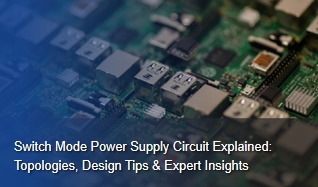Choosing Circuit Board Components for Your Electronic Projects

In the world of electronics, selecting the right circuit board components is a crucial step in ensuring that your projects perform efficiently and reliably. These components are the building blocks of any electronic device, allowing the circuit to function as intended. From basic resistors to more complex integrated circuits (ICs), the quality and compatibility of these parts can make or break your design.
With so many options available in the market, choosing the right electronic circuit board components can be daunting. In this post, we will explore the key considerations when selecting components, provide insights into leading suppliers, and discuss frequently asked questions (FAQs) that can help you make informed decisions. Whether you're designing a prototype or manufacturing in large quantities, understanding these aspects is vital for success.
Understanding Electronic Circuit Board Components
Before diving into how to select the best components, it’s essential to understand the types of circuit board components commonly used in electronic circuits. These parts play distinct roles within a circuit, each contributing to the overall functionality.
1. ResistorsResistors are one of the most common components in any electronic circuit. Their main function is to resist the flow of current, allowing you to control voltage and current within the circuit. surface mount resistors and through-hole resistors are the two primary types, with the former being smaller and used in compact circuit designs.
2. CapacitorsCapacitors store electrical energy temporarily and release it when needed. They are used for filtering, timing, and smoothing out electrical signals. Capacitors come in various types, such as ceramic, electrolytic, and tantalum, each with unique properties suited for different applications.
3. InductorsInductors are passive components that store energy in the form of a magnetic field when electrical current passes through them. They are widely used in power supplies, filters, and transformers.
4. DiodesDIODES allow current to flow in only one direction, which makes them essential for controlling the flow of electricity in a circuit. Light-emitting diodes (LEDs) are a popular subset used for indicator lights in devices.
5. TransistorsTransistors are semiconductor devices that amplify or switch electrical signals. They are fundamental in creating logic gates, signal amplification, and as building blocks of integrated circuits.
6. Integrated Circuits (ICs)Integrated circuits contain multiple electronic components such as transistors, resistors, and capacitors, all in a single package. They are used in almost every electronic device, from microcontrollers to memory chips.
7. Printed Circuit Board (PCB)
PCBs serve as the platform for placing and connecting all of the above components. The choice of PCB material, such as FR-4 or aluminum base, plays a critical role in the overall performance, particularly when it comes to heat dissipation and durability.
Key Considerations When Selecting Circuit Board Components
When sourcing electronic circuit board components, there are several factors that must be taken into account to ensure that your design works as expected. Let’s break down these considerations:
1. Material CompatibilityDifferent circuit board materials have unique properties that suit various applications. For instance, FR-4, a glass-reinforced epoxy laminate material, is widely used in lower-end markets due to its affordability and adequate performance. On the other hand, aluminum-based boards are preferred in high-performance applications because they offer superior heat dissipation. The same principle applies to other components: for example, choosing between ceramic capacitors (which are stable and used in RF circuits) and electrolytic capacitors (which are suited for high capacitance and low frequency).
2. Electrical RequirementsBefore selecting components, it is essential to define the electrical requirements of your circuit, including:Voltage: Components must withstand the maximum voltage levels in the circuit.Current: Ensure components can handle the current without overheating.Frequency: Components like capacitors and inductors should be chosen based on the operating frequency of the circuit.Signal Integrity: For high-speed circuits, maintaining signal quality through the appropriate selection of resistors, capacitors, and inductors is crucial.
3. Component Size and PackagingMany electronic devices today are shrinking in size, which places a premium on smaller, more compact components. Surface-mount technology (SMT) components, for example, allow for denser packing of components on a PCB. If space is a concern, choosing smaller component packages like 0603 or 0805 will be necessary. However, ensure that your team has the tools and expertise to handle these tiny parts.
4. Reliability and LifespanWhen choosing components, especially for applications where durability is critical (such as medical or automotive electronics), consider the Mean Time Between Failures (MTBF) and expected lifespan. High-quality brands with strong reputations offer components that are reliable and have a longer operational life.
5. Cost and AvailabilityPrice is always a key factor in the selection process, but it should be balanced against performance and availability. Opting for cheaper components can sometimes result in poor performance, whereas premium brands might offer better longevity and reliability. It's also important to have backup suppliers for critical components, as supply chain disruptions could impact production.
6. Alternative Components
Sometimes, you might face shortages or long lead times for certain parts. In these cases, having alternative components or cross-reference options can be invaluable. For example, if your design uses a specific resistor or capacitor that is out of stock, identify other components with similar electrical characteristics and form factors that can act as substitutes.
Recommended Suppliers for Circuit Board Components
When sourcing electronic circuit board components, reliability in both quality and delivery is critical. A reputable distributor like unikeyic Electronics offers a broad range of components from industry-leading manufacturers. With brands like Honeywell, Infineon Technologies, and ON Semiconductor, Unikeyic provides you with a one-stop solution for all your component needs. They also offer competitive pricing for bulk orders, ensuring you get the best deal, whether you’re purchasing resistors, transistors, or other critical components.
Frequently Asked Questions About Circuit Board Components
Q1: How do I select the right resistor for my circuit?To choose the correct resistor, first, determine the voltage and current requirements of your circuit. The resistor’s ohm value should match the desired resistance, and its wattage rating should handle the power without overheating. Additionally, consider whether a surface mount resistor or a through-hole resistor is more suitable for your PCB design.
Q2: What is the role of capacitors in a circuit?Capacitors store and release electrical energy. They are used for filtering signals, stabilizing voltage, and timing applications. Different types of capacitors, such as ceramic and electrolytic, are suited for various frequency ranges and capacitance needs.
Q3: Can I substitute one component for another if it’s unavailable?Yes, in most cases, you can find equivalent or similar components to substitute the original one. Ensure that the electrical characteristics, package size, and tolerances are comparable to avoid performance issues. Distributors like Unikeyic Electronics can help you find suitable alternatives from their wide inventory.
Q4: How do I ensure the long-term reliability of my components?Choose components from reputable manufacturers and verify their MTBF ratings and environmental tolerance. Opt for components that meet your circuit’s operating conditions, such as temperature ranges and humidity levels. Also, test components for durability and performance stability during the design phase.
Q5: Are there specific considerations for high-frequency circuits?
For high-frequency circuits, it's essential to minimize signal loss and interference. Components like low-inductance capacitors and high-frequency resistors are crucial for maintaining signal integrity. Proper PCB layout design, including the use of ground planes and controlled impedance traces, is equally important.
Conclusion
Choosing the right circuit board components is key to creating a functional and reliable electronic circuit. From understanding your circuit’s electrical requirements to selecting the most appropriate materials and ensuring component availability, there are many factors to consider. Working with trusted suppliers like Unikeyic Electronics, who offer a wide range of components from top brands, can help streamline the process and ensure you get high-quality parts at competitive prices.With careful planning and attention to detail, you can ensure that the components you select not only meet your performance requirements but also contribute to the overall longevity and efficiency of your design. If you're still unsure about specific components, consult with experienced distributors or engineers who can guide you through the selection process.
Recommended articles related to this topic:
Can TVS diodes and ESD diodes be interchanged? Unikeyic, come and educate!






















